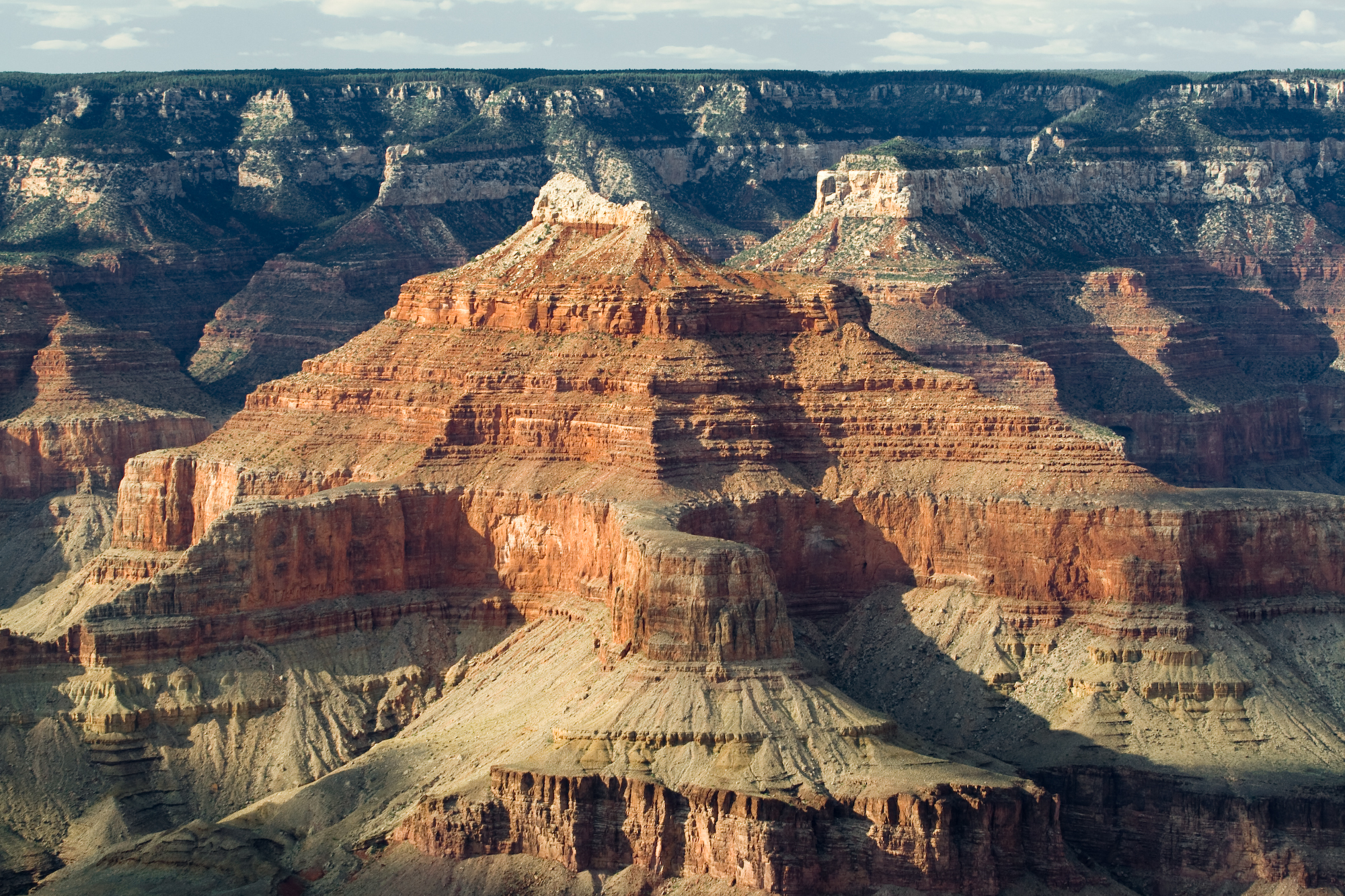 |
| Beautiful picture of the Colorado River flowing through the Grand Canyon |
The Colorado River is a meandering River, which means it's a single channel that wiggles across a flood plain. The Colorado River cuts and curves through the Grand Canyon. The outer curve of the river is deeper than the inside of the curve. The reason for this form is because the water at the end of the curve flows faster which then eats away at the land. This is called the cut bank. The water that flows closer to the curve flows slower which deposits particles; this is called the point bar.
 |
| The Colorado River swerves (meanders) through the Grand Canyon. |
 |
| Diagram showing cut banks and point bars. Taken from Professor Allen's ppt. |
 |
| Notice how the inner curve has deposits of particles and the outer curve is much deeper. |
Although it may not seem so powerful, the high velocity streams of the Colorado River are eroding the Grand Canyon. At times when the river is flowing rapidly, it triggers a process called corrasion which picks up debris and begins to grind within the channel. This process can create potholes. Also the water itself, without any debris, can erode the land by dissolving which is called corrosion.
 |
| Potholes created from corrasion. |
Over long periods of time rivers can create beautiful fluvial landscapes. The Grand Canyon has many V-shaped valleys formed by erosion.
 |
| Notice how the canyon leads down to the river in a V-shape. |
Works Cited
http://www.google.com/imgres?imgurl=http://www.grandcanyonflood.com/images/grand_canyon_colorado_river.jpg&imgrefurl=http://websites.computers4kids.net/~pkafley/ground%2520canyon.htm&usg=__AfyNUDdOcCB3-6w7-hM41yqwJJg=&h=480&w=640&sz=40&hl=en&start=0&sig2=HouIqrLnjEk3ImsSFAUYaQ&zoom=1&tbnid=XU1eDDg9-ozA8M:&tbnh=140&tbnw=191&ei=SkrATZq8MpP6swPjk9CTCA&prev=/search%3Fq%3Dgrand%2Bcanyon%2Briver%26um%3D1%26hl%3Den%26client%3Dfirefox-a%26sa%3DN%26rls%3Dorg.mozilla:en-US:official%26biw%3D1152%26bih%3D622%26tbm%3Disch&um=1&itbs=1&iact=hc&vpx=696&vpy=321&dur=2349&hovh=194&hovw=259&tx=208&ty=153&page=1&ndsp=15&ved=1t:429,r:13,s:0
http://fast.ucdenver.edu/case/1202/Landscapes/Fluvial/PointBarCutBank.jpg
http://www.google.com/imgres?imgurl=http://photography.nationalgeographic.com/staticfiles/NGS/Shared/StaticFiles/Photography/Images/POD/w/water-puddle-nichols-1048902-sw.jpg&imgrefurl=http://photography.nationalgeographic.com/photography/enlarge/water-puddle-nichols_pod_image.html&usg=__fKh7Xd4EQymR2JOIS40jjfg9P7A=&h=600&w=800&sz=148&hl=en&start=0&sig2=RJQ51aitbJoqj4mXi37U1A&zoom=1&tbnid=Z4nl7wcXgckFuM:&tbnh=140&tbnw=171&ei=e0vATZvJGoiosQOD6dSTCA&prev=/search%3Fq%3Dgrand%2Bcanyon%2Bpotholes%26um%3D1%26hl%3Den%26client%3Dfirefox-a%26rls%3Dorg.mozilla:en-US:official%26biw%3D1152%26bih%3D622%26tbm%3Disch&um=1&itbs=1&iact=hc&vpx=308&vpy=321&dur=4639&hovh=194&hovw=259&tx=169&ty=69&page=1&ndsp=16&ved=1t:429,r:12,s:0
https://blogger.googleusercontent.com/img/b/R29vZ2xl/AVvXsEiJSyXAtqL8Sdlun6cVBtKrYjW4Sw495xsLRaeAdQmpX0RmPHpvmXtoZMTMl8KnysfWJe_9sw9XB3eOIy8KGiyFp0gGMt8qHHGXZbXI2R26gpARp7RhlENsgxEeh08KlunVic3JCZgpLJ0/s1600/Nature_Mountains_Grand_Canyon_018928_.jpg
https://blogger.googleusercontent.com/img/b/R29vZ2xl/AVvXsEiJSyXAtqL8Sdlun6cVBtKrYjW4Sw495xsLRaeAdQmpX0RmPHpvmXtoZMTMl8KnysfWJe_9sw9XB3eOIy8KGiyFp0gGMt8qHHGXZbXI2R26gpARp7RhlENsgxEeh08KlunVic3JCZgpLJ0/s1600/Nature_Mountains_Grand_Canyon_018928_.jpg
http://www.scienceclarified.com/landforms/Basins-to-Dunes/Canyon.html

















